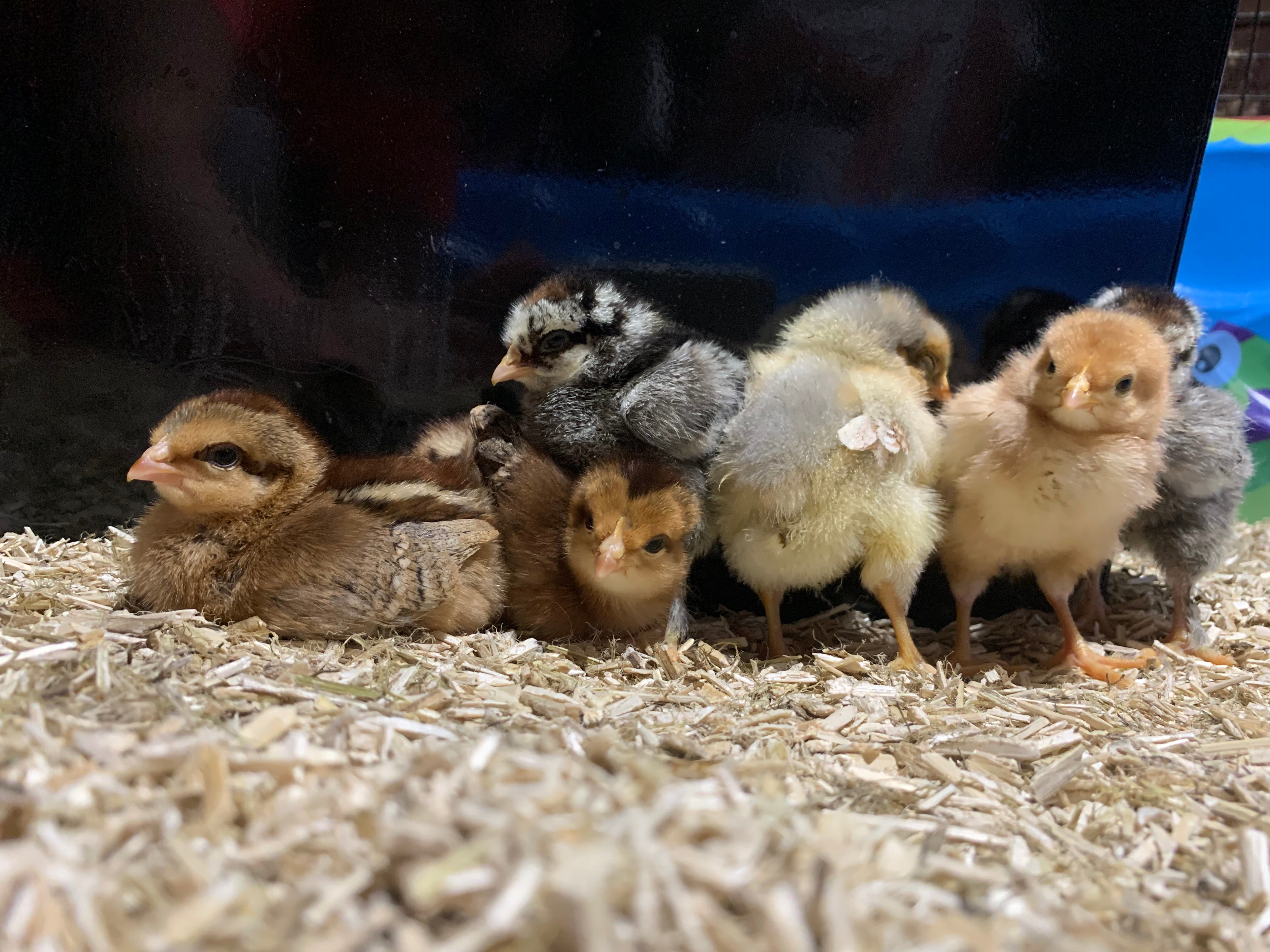
It's a girl...or, rather, ten of them!
Nothing says spring on the farm like the sound of little chicks cheep-cheep-cheeping to their hearts’ content. This year, we bought ten adorable little girls from the wonderful folks at Forest Creek Farmhouse, who sell chicks that are both sexed and vaccinated for Marek’s disease and coccidiosis. We decided on five breeds this year: Blue Laced Red Wyandottes, Whiting True Greens, Ameraucanas, Welsummers, and Silver Laced Cochins.

Our current flock is mainly made up of heritage breeds, and we’ve really enjoyed learning about their different personalities. We also happen to think that they are all gorgeous! Some factors that influence our choice of birds include feather colour, bird size, and egg colour. Our hens lay eggs that are white, various shades of brown, green, and blue. If you ever buy a dozen of our eggs, you will be dazzled by the colour array. In choosing chicks for this year, we selected a couple of breeds that we currently have (Wyandottes, Ameraucanas) and a few breeds we’d like to try out (Welsummers, Whiting True Greens, and Cochins).
Even though our babies are now only four weeks old, their personalities are already starting to bloom. Macy and Manhattan are relaxed and shy; Hazel is a risk taker (first one to jump out of the brood box!); Ruby is a leader; Maggie and Rosie love sitting up high; Ni Hao is quiet; Anika and Beatrix are curious to find out whether the human giants are friend or foe; and little Dumpling loves to cause a ruckus by jumping into the middle of the group of chicks, mosh pit style.

Our chicks live in their brooder for about eight weeks. This gives them time to grow without being pecked at or disturbed by the adult birds, who could potentially hurt the babies. We feed the chicks starter crumble, always ensure they have fresh water, and also have chick grit available to them. We have just started offering them the occasional treat—finely minced arugula and grapes. This is the first time we are using hemp bedding in our brooder box, and we find it creates less dust and less mess in the waterer and feeder.
At around eight weeks, we will introduce the chicks to the coop but keep them separate from the adult birds, while still remaining visible. This allows the hens and roosters time to get used to their new roommates. After a few weeks, we will begin supervised integration. It takes time and patience, but we have found that this is the best way to ensure no one gets hurt. Introducing new chickens will likely disrupt the pecking order, so we expect some naughty behaviour, like increased pecking on the perches at night. After a couple of weeks, things usually mellow out as everyone finds their place in the flock.
In the meantime, we are relishing in the endless chirping coming from the brooder in our basement.